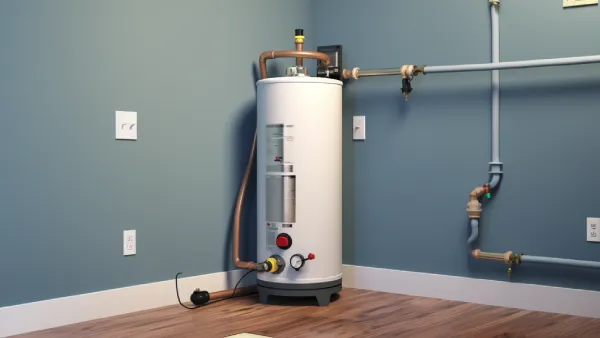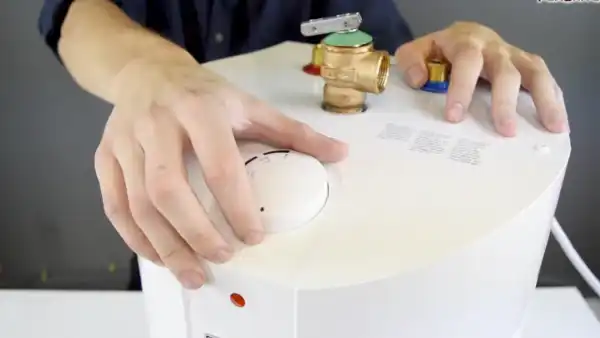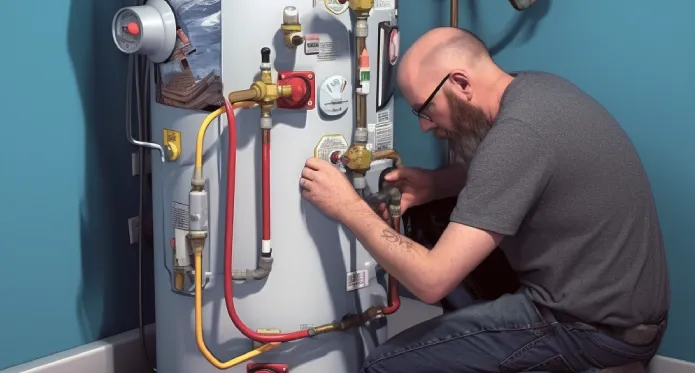Last Updated on September 6, 2023
A self-cleaning water heater represents a remarkable innovation in domestic water heating systems. By eliminating sediment buildup, self-cleaning water heaters ensure a constant hot water supply. To fully understand a self-cleaning water heater, you should know how it works.
As a starting point, the cold water inlet allows for a constant flow of fresh water into the tank, ensuring that sediment does not accumulate. Its dip tubes help evenly distribute hot water throughout the tank and prevent cold spots.
The curved dip tube agitation feature keeps the sediment from settling at the bottom of the tank. It ensures optimal performance and prolongs the lifespan of your water heater.
This article provides an insight into the fascinating world of self-cleaning water heaters and explains how they work their magic. Their maintenance instructions are also included.
How Does a Self Cleaning Water Heater Work: 6 Factors

Regarding the functionality of a self-cleaning water heater, several key factors exist. Here are 6 of them:
- Cold water inlet
- Curved dip tube agitation
- Agitation prevents settling
- Hot water heating
- Hot water outlet
- Anode Rod protection
1. Cold Water Inlet
As cold water enters the water heater through an inlet pipe, it carries minerals and impurities. These substances, such as calcium carbonate, can cause sediment buildup within the tank over time. This accumulation of sediment can reduce the efficiency of your water heater and even lead to damage if not addressed properly.
To combat this issue, self-cleaning water heaters have a special feature called a dip tube. Its purpose is to direct cold water from the supply line to the tank’s bottom, which is heated by a gas burner or electric element.
By doing so, the dip tube helps prevent sediment from falling to the bottom and allows for more efficient water supply heating.
2. Curved Dip Tube Agitation
As the water enters through the curved dip tube, it encounters the specially designed fitting, which creates a swirling motion. This swirling action agitates any sediment or debris that may have settled in the tank’s bottom.
Keeping the sediment in constant motion prevents it from settling and accumulating on heater components or other water heater components.
3. Agitation Prevents Settling
As water flows into the tank through the dip tube, its curved design causes the water to swirl, creating turbulence that agitates the sediment particles. This agitation disrupts their settling ability and forces them to remain suspended within the water column.
Therefore, any sediment in your water heater is continuously circulated and washed away during routine maintenance procedures like draining and flushing. This self-cleaning mechanism frees your tank from excessive sediment accumulation, promoting optimal performance.
4. Hot Water Heating
The temperature setting determines how hot the water in the tank will be. Setting the temperature at a level that meets your needs without wasting energy is important. Most manufacturers recommend a temperature of 120 degrees Fahrenheit, considered safe for most household uses.
Setting too high a temperature wastes energy and increases the risk of scalding accidents. Conversely, setting it too low may result in an inadequate hot water supply for your needs.
5. Hot Water Outlet
After the water heater reaches the desired temperature, it draws hot water through the hot water outlet to your faucets, showers, and appliances. At the top of the tank, the outlet pipe is designed to handle pressure and temperature, so the hottest water is always available.
Also, the size and shape of the outlet pipe can vary depending on the water heater’s size and type.
6. Anode Rod Protection
Equipped with a sacrificial anode rod, many water heaters attract corrosive particles to protect the tank from rust and deterioration.
This anode rod is typically made of aluminum or magnesium and is placed inside the water heater’s tank. The anode rod is more reactive than the tank’s metal; it attracts these corrosive particles instead.
The sacrificial anode rod essentially sacrifices itself by corroding over time to prevent damage to the tank. This process is known as cathodic protection.
How to Maintain a Self-Cleaning Water Heater?
To properly maintain your self-cleaning water heater, several key points must be considered. Here are some tips:
- Regular draining
- Anode rod inspection
- Temperature and pressure relief valve (T&P valve) Testing
- Visual inspection for leaks and corrosion
- Maintain clearance around the heater
Below is a closer look at each tip:
1. Regular Draining
Sediment buildup can affect the heart’s ability to heat water effectively by the coil. It can also lead to corrosion and other damage. To perform a regular drain, attach a hose to the water heater’s drain valve.
Make sure it is directed towards a suitable drainage area. Open the valve and allow a few gallons of water to flow out. This will help flush out any accumulated sediment and keep your self-cleaning water heater working optimally.
2. Anode Rod Inspection
If the anode rod is heavily corroded, you must replace it to protect the water heater from rust and maintain longevity. As water passes through, it attracts corrosive particles that would otherwise attack the interior walls of the tank. Over time, these particles cause the anode rod to corrode.
3. Temperature and Pressure Relief Valve (T&P Valve) Testing
Ensure you test the T&P valve at least once a year to ensure it functions properly. The T&P valve, also known as the Temperature and Pressure Relief valve, maintains the safety of your water heater.
This valve is designed to release excess pressure and temperature buildup within the tank caused by high water temperatures or malfunctioning thermostats.
To test the T&P valve, simply lift its lever and listen for any sounds of water flowing or observe any discharge through the overflow pipe.
If you notice these signs, the valve is working correctly. And, if there are no sounds or discharge, it may be necessary to replace the T&P valve to ensure your water heater’s safety remains intact.
4. Visual Inspection for Leaks and Corrosion
Inspect the water heater and its surrounding area regularly for signs of leaks, corrosion, or rust. This visual inspection is crucial in maintaining the proper functioning of your water heater.
Start by checking the connections and pipes for any moisture or dripping. Look closely at the tank itself for any signs of leakage, such as pooling water or dampness. If you notice any discoloration, flaking, or pitting on the tank’s surface, it may indicate corrosion or rusting.
Be sure to also inspect the pressure relief and drain valves for any signs of leakage. Addressing these issues promptly can prevent further damage and ensure a longer lifespan for your water heater.
5. Maintain Clearance Around the Heater
Be sure to keep the area around the water heater clear of clutter and flammable materials to ensure proper ventilation and easy access for maintenance.
Adequate clearance is crucial for the efficient operation of your water heater. With enough space around the unit, air can circulate freely, preventing overheating and potential damage.
Can I adjust the temperature setting of my self-cleaning water heater?

You can certainly adjust the temperature setting of your self-cleaning water heater to best meet your individual needs. Many manufacturers typically recommend a temperature of about 115 to 120 degrees Fahrenheit as a safe and efficient option for most households.
This temperature allows for enough hot water supply while also balancing energy efficiency, which can ultimately help save you money on your energy bills.
Revolutionize Your Hot Water Experience with a Self-Cleaning Water Heater
A self-cleaning water heater is like a diligent housekeeper for your hot water needs. Its innovative technology works tirelessly to remove sediment and mineral buildup, ensuring efficient performance and prolonging the lifespan of your heater.
By periodically draining the tank, inspecting the anode rod, and conducting essential checks, you can ensure their self-cleaning water heaters continue functioning at their best. Enjoy uninterrupted hot showers and peace of mind knowing your water heater works diligently behind the scenes.
So sit back, relax, and let your self-cleaning water heater do your hard work.


